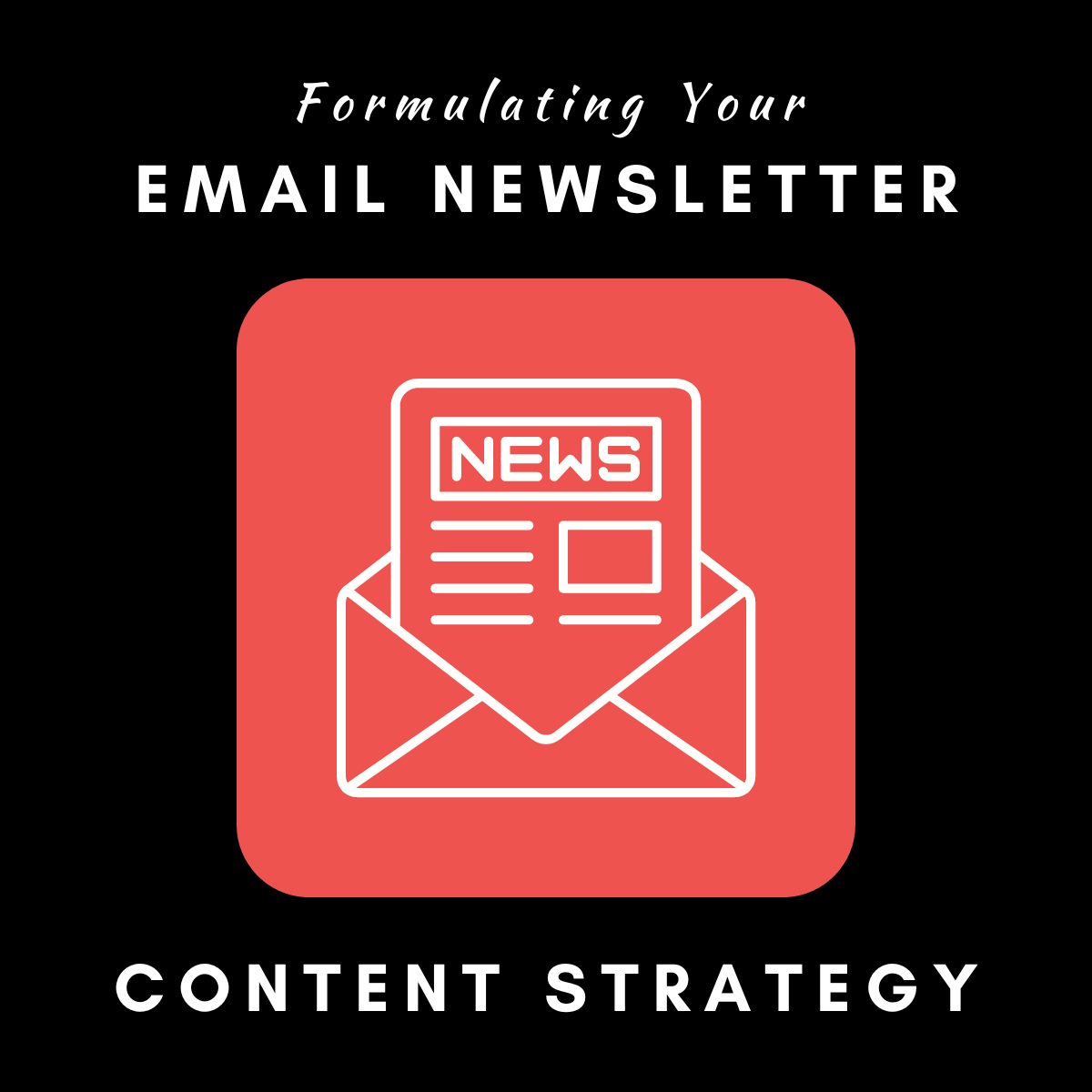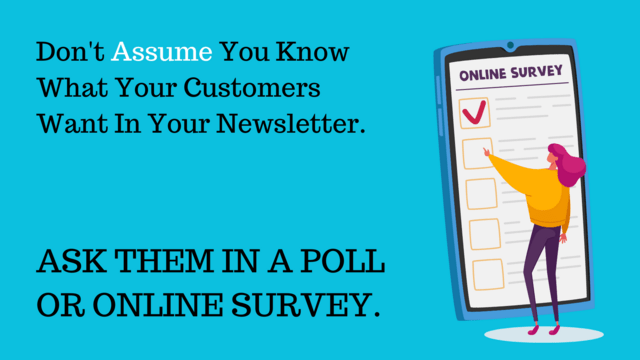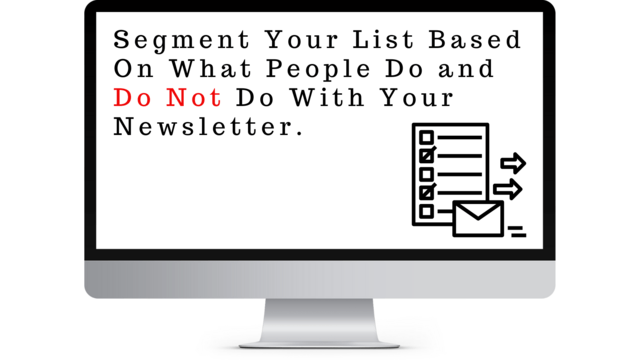
With all the talk about funnel hacking and other email tactics, it's easy to forget about the foundational elements of email marketing and what started this whole thing in the first place. In this article, we will look at a blast from the past, helping you understand how to formulate your email newsletter content strategy for the best user experience and click-thru rate.
Are Email Newsletters Still A Thing?
Every clickbait YouTube and social media marketing ad about email marketing begins with something like "newsletters are dead," which couldn't be further from the truth. In fact, newsletters are still one of the best ways to nurture brand awareness, collect valuable customer data, and showcase your industry expertise.
Sure, there are plenty of bad newsletters out there, but then you come across those that provide a ton of value in digestible chunks and an easy-on-the-eyes format. When we execute correctly, newsletters become the forefront of your email marketing strategy, opening the doors to targeted inbox marketing and funnel building.
How To Create Your Newsletter Strategy
Before you send a newsletter, you need a strategy. It is not a strategy for the individual newsletter but one for the overall theme and how you foresee it looking 12 months later. While every email newsletter campaign will differ, there is a general framework you must follow to lock in solid open rates, grow your list, and get visitors to take action.
Here are the steps to creating an impactful newsletter campaign.
Establish Clear Goals
We use goals in the plural here as you must consider your newsletter subscriber and business. First, you need to set a goal to continuously add value to the subscriber and, second, understand how this newsletter can positively help your revenues. Your newsletter campaign does not need to be all give with no get; after all, you are a for-profit business.
Set realistic goals for your campaign. It's better to create achievable goals rather than lofty unreachable campaign objectives that only a company with years of experience can achieve. However, if you want to increase your goals, sign your company up with an agency equipped with a team of email marketing experts.
Poll Your Email Subscribers
The biggest mistake brands make with email newsletters is assuming they know what subscribers want to hear. Valuable content for the brand may be completely different from the target audience, and the best way to determine what the reader wants to read is to ask them.
Kind of a no-brainer, right? You can accomplish this by simply creating polls with your social media followers, or if you have an existing list that you've lost in your email marketing software, start sending them surveys asking for their help.

Leverage Existing Content
In many cases, the results of your polls and surveys will be suggestions for topics you have previously discussed or continue to discuss across other platforms. Rather than trying to create content ideas from scratch, dig into your previous and current marketing efforts to find relevant content that is helpful to your audience.
You can find this content in your social media activity, a relevant blog post, or other forms of content marketing. If you dig into the crates of your business, many newsletter ideas will present themselves.
But don't let them float inside your head; document them in an organized way so you can build a 6-month- or 12-month campaign without any issues.
Decide On Original Content
Now here comes the tricky part, or is it? Content creation can be a struggle, but I'll give you a trick that works for me. Start by looking at what other people have said about a topic and then identify what they've missed or what you disagree with. Often, the contrarian point of view is extremely valuable to an audience and should be a part of your email content plan.
It also helps to think of content ideas with your team. Going through this process as a collaborative effort yields more fruit than asking everyone to think of it independently. With a bit of back and forth, plenty of email content ideas will surface. The trick is combing through these ideas for the gold nuggets.
Again, document this information as you see it. Use a tool such as Evernote, Workflowy, or ClickUp to keep track of the ideas you come up with.
Determine Your Frequency
"Should I send a monthly or weekly newsletter?" is a question prospective clients often ask us. The answer depends on the industry, the available topics, and the number of resources you can commit to this marketing strategy.
In general, it is better to crawl, walk, and run with your email campaign, and if people want more of your content, invite them to another newsletter with more targeted content about their specific needs. For example, if you are a pet food store, you may have a particular audience interested in dogs and could care less about cats. Create a dog lovers newsletter you send out in the middle of the month where you speak specifically to them.
Create Your Newsletter Template
Most companies begin with a design theme thanks to the "free" email newsletter templates offered by software companies. Templates are often a terrible idea, except for one that says "simple, letter, or blank."
When thinking through the design of your email newsletters, you want to think about content first and design second. The look and feel of the email marketing campaign should only be there to support the content, and in most cases, it will be a subtle difference from the text alone.
Many people read email newsletters without enabling the images, so you don't want your text to look imperfect even when the images are absent.
Create Your Opt-In Forms
I'd rather a company invest thousands of dollars into the highest-converting opt-in form than in a stunning email campaign template. Without a solid subscriber list, your email campaign will have an unnoticeable impact, so the forms are critical.
To create your form, work with a copywriter who can help you determine the most impactful words to get people to give up their email and name. Then, excite them with the "thanks for signing up" page with an inside look at what's to come, which after launch, could be a "best of list" from your previous emails.
Create A Welcome Email
Your official newsletter content strategy begins with the welcome email, not your first edition. You must send your new subscriber value from the start, reiterating the importance of staying tuned for what's the come. You may want to include a "thanks for signing up" bonus delivered to their inbox so they do not hit the delete button.
What kind of value can your content marketing newsletters add from the start so that Gmail, Yahoo, or any other email server sees how fast the reader opened this initial email and continues to white-list it in the future?
A Few Additional Newsletter Content Tips
Now it's time to move on to tactics and best practices. Subtle changes and further effort can engage the reader significantly more than if you ignore these tips.
Be Strategic With Your Subject Line
In direct-response email marketing, subject lines are the most critical part of the message. Your open rates go through the roof when you have a home-run headline. Here are some ideas for you to test.
- Personalization: Use the recipient's name in the headline.
- Create a sense of urgency: Motivate the reader through time sensitivity or limited opportunities.
- Offer value and benefits: While it may "only" be a newsletter, you still want to immediately add value and showcase the benefits.
- Use action-oriented language: Use powerful verbs or phrases such as "Discover," "Unlock," "Join," "Learn," or "Save" to engage and motivate them to find out what's inside.
- Ask a compelling question: Everyone loves answering questions in their heads and then finding out if they are right. So use that in your newsletter headline.
- Avoid spam trigger words: Avoid using the words you know to be "this is spam" triggers, such as urgent and free.
- Leverage social proof: Social proof is rarely a bad idea. So starting with a headline such as "See how Johnny saved 10 hours per week" can work for newsletters.
If you have the capacity or work with an agency, you can split-test these headline strategies to see what works best with your audience.
Segment Your Email List
Segmenting your list serves numerous purposes, but all comes down to improving the user experience and increasing your open rates. You will want to create an audience segment based on what the reader clicks and does not click.
For example, if they do not open the emails, put them into a risk group where you take a different approach to the headline or email cadence.
As mentioned in the pet store example, you can also segment them based on their interests, such as pet treats, pet toys, or raw dog food.
In reporting, segmenting your list provides valuable data to understand your customers better.

Leverage User-Generated Content
Customers love to hear from other customers, and you can accomplish this within your email newsletter to provide a richer reading experience. What is your client's perspective on a topic?
If you are in finance, can you poll your clients to see how they feel about the current economy, their fears, and their decisions? In this situation, you can show the results, pick three people to provide their sentiments, and then end with your expertise on the subject.
Push SMS to Your Email Newsletters
Just because email marketing is nearly free doesn't mean it isn't worth putting extra dollars behind. Email open rates are significantly lower than text click-thru rates, so while your SMS list may be smaller, sending a follow-up text to those who do not open the newsletter is worth it. And sometimes, your SMS subscribers may find the delivery to their phone better than their overcrowded inbox.
Newsletter Content Marketing Experts
We hope you enjoyed this article. If you want to take your content marketing to the next level, we can help. The Nine is a digital marketing agency specializing in content strategy services.
Book a time with one of our email marketing specialists to learn how we can help your business improve its overall content strategy.
